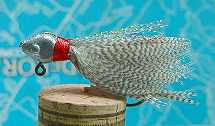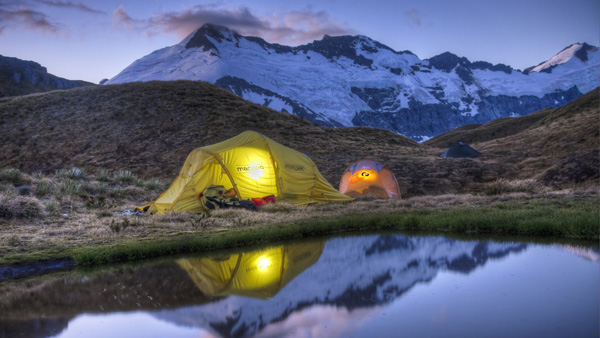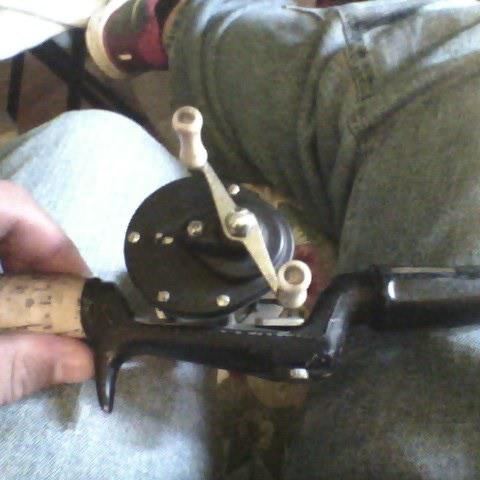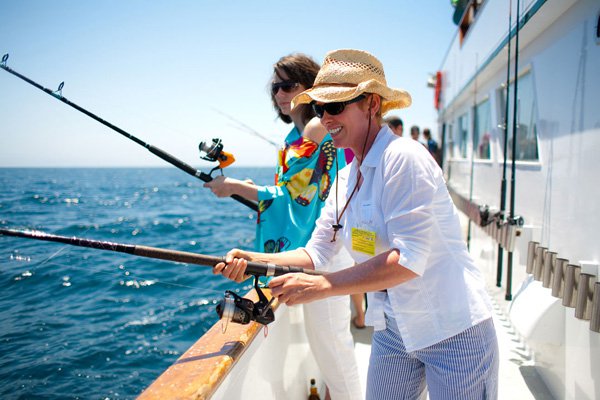There has been a LOT of talk about the Float and Fly lately in magazines and on regional TV shows. The "Newest" tactic to catch big fish!
Reality is that the "Float and Fly" has been around for years. It was originally a way to catch crappie in the winter. Fishermen used the rig to fish small jigs and minnows for crappie. The problem was that in East Tennessee where the technique originated, crappie and smallmouth seem to like to inhabit the same areas of the lake during winter. Winter Crappie fishermen were breaking off a LOT of small jigs thanks too smallmouth bass, and not just any smallmouth bass, but BIG smallmouth.
Many anglers have used the Float and Fly and others have used some form of it over the years. However the real genesis of the "Float and Fly" was a gentleman who ran a tackle store in East Tennessee. Charlie Nuckols kept hearing his winter customers cursing those darn smallmouth and decided to see if he could figure out a way to catch some nice smallmouth using a crappie style rig.

I don't know what kind of rig he used, but it worked. Other guides, and fishermen learned the way of the Float and Fly and each brought his or her own outlook to the rigging of the Float and Fly.
Bob Coan of Celina Tennessee is probably one of the most studied on the subject of the Float and Fly. (Matter of fact most of the information for this article is from Bob) Bob has developed his own rig, and can at times get a bit persnickety when folks try to tell him that they can do it differently.
The bobber is your basic foam/ styrofoam bobber with weighted bottom. Bob takes the bobber and removes the guts carefully. He then cuts the bobber in half and takes a cigarette or other available hot item and creates a depression in the middle of the bobber for the weight to fit into. He inserts the weight from the bottom into the middle of the bobber and puts the bobber back together, and glues the 2 halves back together. (If you don't like the idea of tearing apart a bobber, Dale Hollow One Stop in Celina Tennessee, sells a Bob's Bobber that was designed based on Bob's idea. You can purchase the bobber on line at www.punisherjigs.com)
What the Bob's bobber is designed to do is to lie over on its side when there is no weight pulling it down. The idea being that when a smallmouth comes up from under the bobber the bobber without weight on it will lay over indicating a strike. Most times the bobber will sink when a smallie is on, but occasionally the smallmouth are under the bait coming up and this gives you just a slight edge in hooking the fish.
The idea of the swivel is to keep the bait at a specific level and to reduce the amount of stress on the line. This is accomplished by not having to wrap your line around the bobber and creating a stress point by creating that concentrated coiling around the bobber shaft.
Now you are ready to fish. But why does this work so well.
Bob contends that it is the basic fishing premise that Buck Perry made famous. Depth control plus speed control will get the fish to bite. Put the bait in front of the fish at a speed he wants and you have him. In winter Bass will suspend in 10 to 14 feet of water along many rock banks and around cover. Think of water in winter like being at 5000 feet and trying to exercise. Water is thicker to the fish and harder to move through when it is cold. It is the same way for bait fish. By putting the bait in front of the fish and moving it at the same rate of speed as the larger fish you are mimicking the actual way that bait fish relate to cover, structure and to other fish. It's the opportunity to feed without exerting much energy.
Just about any type of jig will work in the 16th and 32nd ounce range. However, Bob swears by the Duck Feather most of the early season of December and January. The scale pattern mimics a bait fish, and when a little garlic is put on the bait everything seems to work. Most days at least one 4 pounder will be caught, and fish up to 7 pounds have been brought successfully to the boat. Bob uses the Punisher Jig Float Fly made in Celina Tennessee. (www.punisherjig.com)
It is those break offs on Dale Hollow that really get your blood pumping though. When you are fishing a lake that has produced the top 3 Smallies of all time, each break off is a rush of adrenalin. What did I MISS?
I have talked about the rig, but probably one of the most important aspects of the Float and Fly method is the Rod. You have to use a long rod made for this kind of fishing. A Noodle Rod will work, but as Bob likes to say, I never have caught a
Noodle on one of those Noodle Rods. Bob prefers to use the Float and Fly rods made by All Pro. Rods come in 8 foot to 11 foot lengths. My personal favorite is a 9' 6" Rod given to me by Bob. It works well for me, because I am tall and have a slightly longer reach that allows me to use leaders up to 15 feet in length. Longer rods are for both longer leaders and shorter people. The 8 foot rods are tournament legal. An important aspect when winter fishing for bass during a tournament, as many tournaments have an 8' Rod Length limit.
The rod is what you fight the fish with. It takes most of the strain of the fight by bending easily and creating pressure on the fish. Keeping the rod bent is very important. If it straightens out with a fish on, most likely the fish will have enough slack to spit the lure out.
The trolling motor that you use plays a big part in fishing the Float and Fly. On windy days you need to be able to concentrate on the cast not on the boat position. Bob swears by one of the newer trolling motors put out by Motor Guide. It is called the Pinpoint. This motor will sense the distance from the bank, or control your boat based on a specific depth or hold you over a channel. If you want to fish 50 feet from the bank you set it and "Forget IT" and the motor does the work of keeping you parallel to the bank without you taking time away from fishing.
We have talked about all the aspects of the Float and Fly except for the reel. Spinning reels are the only way to go. It is almost impossible to throw a 32nd or 16th ounce jig with a baitcaster, and the best spinning reels have a trigger. It is much easier to get all that line behind you if you can just pick it all up and back cast it behind you, and then pull the trigger to make the forward cast.
Making the cast is the hardest part of this system. You have up to 12 to 15 feet of line and a small jig to get out. First step is to work this into the water in front of you and then to back cast. The back cast should end with the bait stretched out behind you in the lake. Wait until you hear the bait hit the water. This makes the forward cast work because with the jig in the water you are pulling everything in a straight line. It will also prevent wind knots. Cast to within a few feet of the bank and then work the jig out away from the bank until the bobber stands up. Then point the rod at the bobber and shake it like you are shaking your finger at a naughty child. This will make the bait flit around in the water like a nervous bait fish. When the bobber sinks or lays over you have a bass and set the hook. Sweep the rod straight UP not to the side. You want the jig to stay straight up and to hook the fish in the roof of the mouth.
Bingo you got the Float and Fly.
NOW the basic mistakes most folks make. You can NOT use a slip bobber for this method. A 32nd or 16th ounce weight is not enough to pull the line through the bobber, and adding weight will take it down, but then when you work it back to the boat, you end up with the bait working its way up the line shallower than you want. The key to the system is DEPTH and keeping the bait in front of the fish. As you work a slip bobber to the boat, the bait rises out of the strike zone. NO you cannot work this on a 7 foot rod in shallower water with shallower fishing. The rod is the key. The limberness of the rod keeps the BIG fish from either breaking you off or in straightening the hook on the jig.
Stick with what I have described here and you will catch fish. Better yet try a Float and Fly trip with Bob Coan or one of the guides he works with. You won't be sorry.
Bob Coan can be reached at 1-866-233-2471
Or E-mail Bob at
[email protected]
Bob is a guide on Dale Hollow Lake
You can see his website at http://www.1fghp.com/bobcoan.html
Written by Jim Dicken
Owner Fishing Guides Home Page http://www.1fghp.com
Editor Fishin.com
 I don't know what kind of rig he used, but it worked. Other guides, and fishermen learned the way of the Float and Fly and each brought his or her own outlook to the rigging of the Float and Fly.
I don't know what kind of rig he used, but it worked. Other guides, and fishermen learned the way of the Float and Fly and each brought his or her own outlook to the rigging of the Float and Fly.


